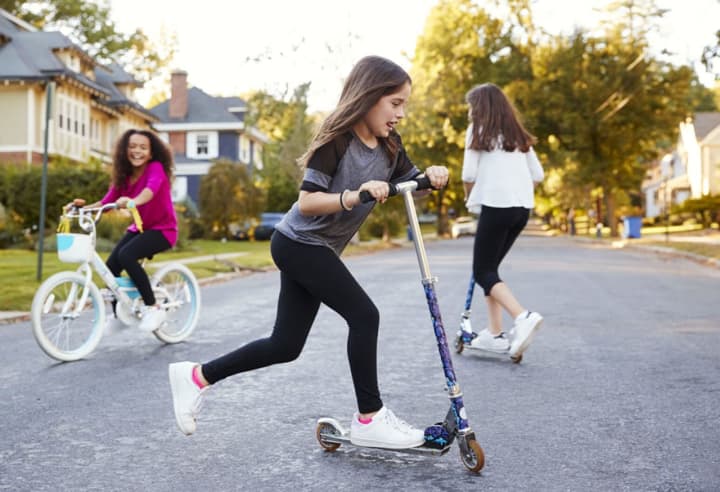Like many families, we are coming off a few months with the kids cooped up inside. Summer is officially in full swing, but camp and other summer sports are either canceled or curtailed, and I’m becoming concerned with keeping my kids physically active. What strategies can I use to get them off their screens and outside without turning into a 24/7 nag?
Signed,
“Housebound But Hopeful”
Dear Housebound:
While the shuttering of summer activities might seem like the end of the world both for you and your kids, there are plenty of ways you can recreate the outdoor experience so they stay in shape (and you stay sane).
But first, let’s look at why they should get off the couch. The benefits of regular exercise in children include improved weight and bone health, improved cognitive function, improved cardiorespiratory function, and decreased risk of depression. Physical activity—including jumping, hopping, and skipping—can also help children meet their motor milestones.
Now you’re probably wondering how much to aim for.
That depends largely on age—children ages 3 to 5 should be physically active throughout the day to assist in proper growth and development, while children from ages 6 to 17 should get 60 minutes or more of moderate to vigorous physical activity per day. This includes aerobic activity such as brisk walking, bicycling, jumping rope, and swimming.
Children should also participate in muscle-strengthening activities, such as climbing, playing on the playground, and playing tug-of-war, at least three days per week. Bone-strengthening activities like jumping jacks, jumping rope, running, and hopscotch are also recommended three days a week.
Of course, not everyone has access to a pool or large, open spaces, and you probably don’t have the time to play camp counselor all day. The good news is that there are easy ways to slip all three forms of exercise into your child’s day.
Encourage kids under 5 to run, skip and jump, and if they can, play games like red light/green light or Simon Says with their friends or siblings. Children aged 6 to 12 can set up and complete obstacle courses, ride their bikes, and hold running races with their friends and family. Older kids might enjoy having fitness-based goals, such as 100 push-ups or sit-ups by the end of the summer, or running a 5k, which they can work toward as the months go by.
There are other ways to make exercise more interesting and less like a chore for kids who feel the pull of their screens. Encourage a morning bike ride, a walk in which they have to search for objects, or another fun outdoor activity before allowing electronics later in the day.
If you are going for a run, have your kids ride their bikes on the sidewalk next to you while you run. Into hiking? Bring the kids on the trail for a fun family activity. If your budget allows, buy some new sports or play equipment to entice them outside. It doesn’t need to be expensive—think bubbles for your toddler to chase or a new ball for your older child. Sidewalk chalk, party store favors, and water balloons are other great options. Turn screen time into exercise time. If a compromise is needed on a rainy day there are websites that offer videos on yoga and other fun exercises for kids.
The bottom line: Summer might look different this year, but that doesn’t mean kids can’t stay in shape and have fun while doing so.
With Jessica Calabro, DPT; Soteroulla Savva, DPT; Lorian Macpherson, PT, MS; Melanie Buckland, PT, DPT


